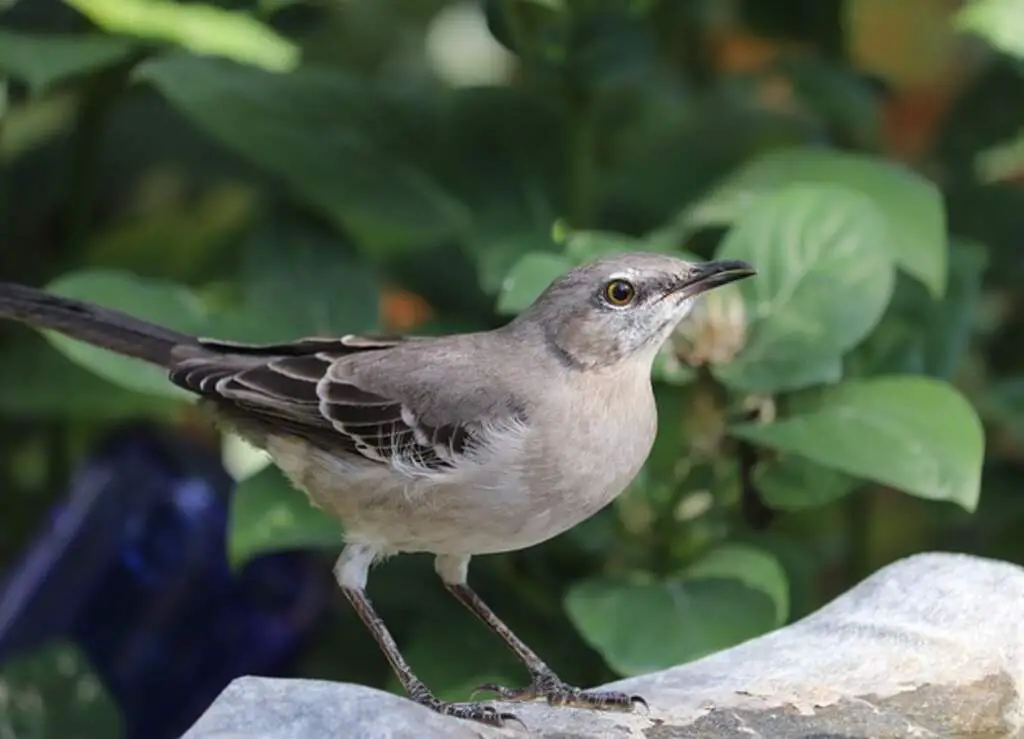If you’re an avid birdwatcher or simply enjoy spending time in nature, you might have come across a mockingbird. With their remarkable vocal abilities and striking appearance, these birds are hard to miss. In this guide, we will take a closer look at what a mockingbird looks like, exploring their physical features, coloration, size, shape, plumage, markings, beak shape, and more.
Table of Contents
- 1 Key Takeaways:
- 2 What Does A Mockingbird Look Like?
- 3 Physical Features of Mockingbirds
- 4 Coloration and Plumage of Mockingbirds
- 5 Size and Shape of Mockingbirds
- 6 Markings and Patterns on Mockingbirds
- 7 Beak Shape of Mockingbirds
- 8 Recognizing Mockingbird Species
- 9 Mockingbirds’ Vocal Abilities
- 10 Mockingbirds’ Habitat and Range
- 11 Behavior of Mockingbirds
- 12 Diet and Feeding Habits of Mockingbirds
- 13 Conclusion
- 14 FAQs: What Does A Mockingbird Look Like?
- 14.1 How big are mockingbirds?
- 14.2 What are the markings and patterns on mockingbirds?
- 14.3 What is the beak shape of mockingbirds?
- 14.4 How can I recognize different mockingbird species?
- 14.5 What are mockingbirds’ vocal abilities like?
- 14.6 Where do mockingbirds live?
- 14.7 What is the behavior of mockingbirds?
- 14.8 What do mockingbirds eat?
- 14.9 How can I identify mockingbirds?
- 15 Author
Key Takeaways:
- Mockingbirds are medium-sized birds with a slender body and long, thin legs.
- They have predominantly gray plumage with lighter underparts, and their wings and tail feathers are darker with white patches or bars.
- Mockingbirds have a slender, slightly curved beak, adapted for capturing insects, fruits, and berries.
- Understanding the characteristics and habitat of mockingbirds can aid in their identification.
- Mockingbirds are highly territorial and known for their aggressive behavior and remarkable vocal abilities.
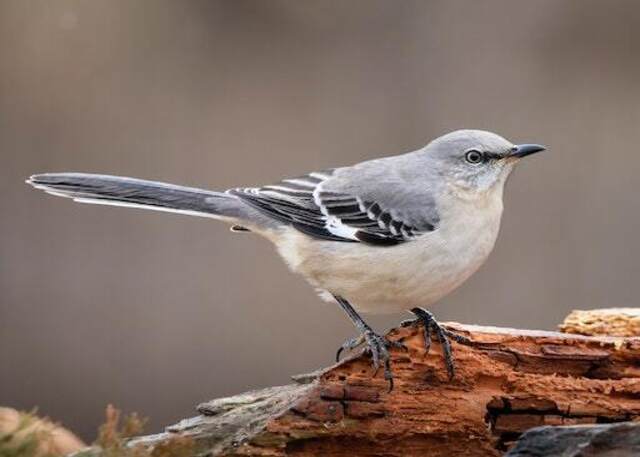
What Does A Mockingbird Look Like?
The Northern Mockingbird is a medium-sized bird with a long tail and a slender body. It has a gray-brown plumage with white patches on its wings and tail. The bird’s wingspan can range from 12 to 15 inches, and it can weigh anywhere from 1.4 to 2 ounces.
The mockingbird has a distinctive white patch on its wings that is visible when it is in flight. It also has a long, thin bill and dark eyes. The bird’s tail is relatively long and has white feathers on the outer edges. Overall, the mockingbird is a sleek and elegant bird with a beautiful song that is often heard in its natural habitat.
Physical Features of Mockingbirds
Mockingbirds are fascinating creatures with an array of physical features that distinguish them from other bird species. Their appearance makes them visually striking, and their physical attributes enable them to thrive in their environments.
| Physical Feature | Description |
|---|---|
| Body Shape | Mockingbirds have a slender body and long, thin legs. Their elongated body shape helps them to fly with agility. |
| Head | They have a rounded head with a prominent eye that aids in their vision. |
| Bill | Their slightly curved bill is adapted for capturing insects, fruits, and berries. |
| Wings | Mockingbirds have short and broad wings that allow them to maneuver in the air with ease. |
| Plumage | They have predominantly gray plumage with lighter underparts, and their wings and tail feathers are darker. |
| Tail | Their long tail helps with flight maneuverability. |
Overall, the physical features of mockingbirds enable them to thrive in a range of environments, from dense forests to urban areas. Their slender body shape and elongated tail make them excellent fliers, while their slightly curved bill and prominent eye aid in their hunting and foraging abilities.
Coloration and Plumage of Mockingbirds
Mockingbirds have a distinct gray plumage with lighter underparts, which assists in camouflaging them in their natural environment. Their wings and tail feathers are darker, often displaying white patches or bars. Some species may have subtle variations in coloration, such as a touch of brown or tinges of white on their feathers. The coloration of mockingbirds can vary slightly according to gender and age, with juvenile birds having a browner plumage that gradually changes to gray as they mature.
Their gray feathers allow them to blend well with their surroundings, making them hard to spot. The white patches on their wings are visible during flight and are an essential identifying characteristic. The tail feathers of mockingbirds are often longer and broader than those of similarly sized birds, aiding in their maneuverability when flying.
Mockingbirds have an intricate pattern of feathers, with lighter shades around their eyes and throat. These patterns can vary among species and individuals, making identification more challenging. The markings on their feathers and their distinctive white patches help distinguish mockingbirds from other birds in their habitat.
Size and Shape of Mockingbirds
Mockingbirds are medium-sized birds, measuring approximately 9 to 11 inches in length, with a wingspan of roughly 13 to 15 inches. Their slim, elongated body shape, long tail, and broad, short wings allow them to fly with remarkable agility.
Their slender build allows them to move quickly and skillfully through the air, with the ability to make rapid changes in direction and speed. Their long tail feathers act as an additional tool for steering and maneuvering in the air.
When perching, mockingbirds stand tall on their long, thin legs, which make up a significant portion of their body length. Their rounded head, with a slightly curved bill and prominent eye, gives them a distinct appearance similar to other members of the mimid family.
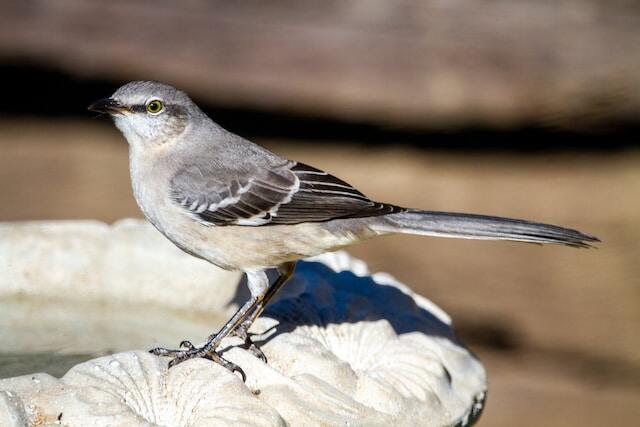
Markings and Patterns on Mockingbirds
One of the most distinctive and recognizable features of mockingbirds is the white patches on their wings. These patches are visible when the birds are in flight, and some species may display additional white markings on their tails or underparts.
While the white patches are the most common markings on mockingbirds, some individuals and subspecies may also have faint streaks or spots on their breast or belly. However, these markings can vary greatly between individuals and are not always present.
When trying to identify a mockingbird species based on its markings, it’s essential to observe the bird carefully and note any distinguishing characteristics. It’s also important to consider the bird’s physical appearance, coloration, beak shape, and habitat to make an accurate identification.
Mockingbirds have subtle and intricate markings, making them unique and beautiful birds to observe in the wild.
Beak Shape of Mockingbirds
The beak of a mockingbird is slender and slightly curved, making it an excellent tool for capturing insects, fruits, and berries. Its unique shape allows them to extract food efficiently from various sources, making them adaptable and successful foragers.
Mockingbirds’ beaks are designed for their omnivorous diet, which includes a wide range of foods. They have a sharp, pointed tip that helps them pierce the skin of fruits and berries, and a slightly curved shape that allows them to grasp insects with precision. They are also capable of crushing small seeds and nuts, making them resourceful in times of scarcity.
A mockingbird’s beak is a crucial part of its anatomy, enabling it to survive in various environments, from the forests to the city. Their ability to adapt to different food sources and manipulation of their beaks has allowed them to expand their range and thrive in a wide variety of habitats.
Recognizing Mockingbird Species
While the physical characteristics of mockingbirds are relatively consistent among different species, there are subtle differences that can help you identify specific types of these birds.
| Species | Characteristics |
|---|---|
| Northern Mockingbird | A gray overall body with white underparts. White patches on wings and a white tail with black edges. A paler gray head with a black mask around the eyes. |
| Tropical Mockingbird | A buffy-gray overall body with a white belly. A white patch on the wings. Dark bars on tail feathers. A black patch on the face. |
| Bahama Mockingbird | A brownish-gray overall body with gray underparts. Dark stripes on the throat and breast. White patches on wings. The head has a noticeable black and white streaked pattern. |
| Sage Thrasher | A gray-brown overall body with a white underside. Dark streaks on the throat and breast. A prominent eye stripe and a short, curved bill. |
These are just a few examples of the different mockingbird species out there. As you become more familiar with the characteristics of mockingbirds, you may be able to recognize additional species in the wild.
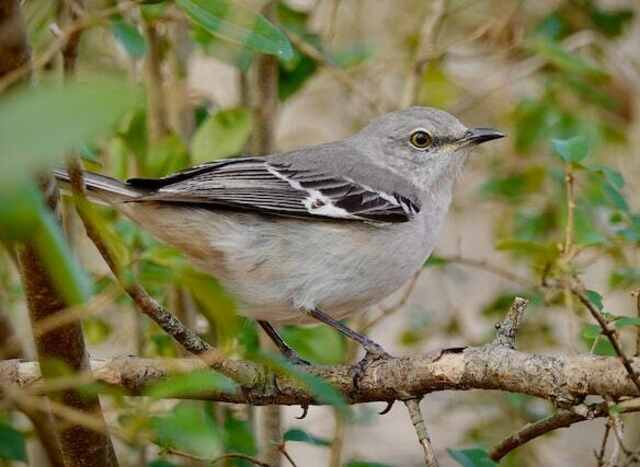
Mockingbirds’ Vocal Abilities
One of the most distinctive features of mockingbirds is their remarkable vocal abilities. They are excellent mimics, imitating the songs of other birds, as well as various sounds they encounter in their environment. These vocalizations often include whistles, trills, chirps, and other complex sounds.
Their vocal abilities are so impressive that they have been known to imitate the sounds of car alarms, sirens, and even human speech. In fact, the Northern Mockingbird, one of the most common species in North America, has been documented mimicking over 200 different bird species and countless other sounds.
Mockingbirds use their vocalizations for a variety of purposes. They often sing to establish territory and attract mates, as well as to communicate with other nearby birds. They may also use their mimicry skills to intimidate potential predators or to defend their nests.
Overall, mockingbirds’ vocal abilities are a unique and fascinating aspect of their nature, and they serve as a prime example of the incredible diversity and complexity of the natural world.
Mockingbirds’ Habitat and Range
Mockingbirds are widespread in North and Central America, with different species occupying various habitats. They can be found in forests, scrublands, and even urban areas. Mockingbirds are adaptable and can thrive in a range of environments, including agricultural fields and parks.
Depending on the species, mockingbirds can be found in different regions. The Northern Mockingbird is found throughout much of the United States, including the Great Plains, the Southwest, and parts of the Northeast. The Bahama Mockingbird is endemic to the Bahamas, while the Tropical Mockingbird can be found in Central America and parts of South America.
In terms of habitat, mockingbirds prefer open areas with scattered trees and shrubs. They are also commonly found in suburban settings with well-manicured lawns and gardens. Understanding their habitat and range is essential to identifying and appreciating these unique birds in the wild.
Behavior of Mockingbirds
Mockingbirds are not only fascinating to look at but also exhibit unique behaviors that make them stand out. These birds are highly territorial and will defend their nesting areas with aggression. They are also known to engage in aerial displays and acrobatic flight patterns, which can often be observed during their courtship rituals.
One of the most remarkable traits of mockingbirds is their exceptional vocal abilities. These birds are excellent mimics, imitating the songs of other birds, as well as various sounds they encounter in their environment. Their vocalizations often play a crucial role in their territorial defense and courtship displays.
In urban areas, mockingbirds may exhibit different behaviors, adapting to their environment. They may start singing at unusual times, such as during the night, to compete with other noise sources, such as traffic or streetlights.
It is essential to understand the behavior of mockingbirds to appreciate their presence fully. Observing these birds in their natural habitat can be an exciting and enlightening experience, providing a glimpse into their unique behavior patterns.
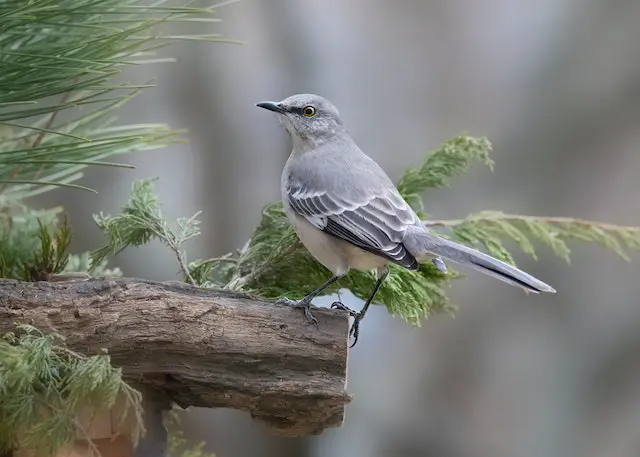
Diet and Feeding Habits of Mockingbirds
Mockingbirds have a diverse and omnivorous diet, feeding on a wide variety of insects, fruits, and berries. These birds are known to consume ants, grasshoppers, beetles, and caterpillars, among other insects.
In addition to insects, mockingbirds also feed on a range of fruits and berries. They are often seen eating blackberries, mulberries, and elderberries, as well as figs, grapes, and cherries. Mockingbirds have also been observed eating small reptiles and amphibians on rare occasions.
Mockingbirds typically forage for food on the ground or in the lower branches of trees and shrubs. They are also known to feed on insects that are attracted to outdoor lighting at night. In urban areas, mockingbirds may occasionally visit bird feeders.
Mockingbirds have a unique feeding habit that involves repeatedly flicking their wings and tail while foraging for food. This behavior is believed to startle insects and flush them out of hiding.
Conclusion
Mockingbirds are intriguing birds with unique physical features that make them stand out in the wild. By exploring their appearance, coloration, size, shape, plumage, markings, and beak shape, we can appreciate their beauty and understand the characteristics that define them.
Mockingbirds have a predominantly gray plumage with lighter underparts, and their wings and tail feathers often have white patches or bars. They have a slim, elongated body shape with a long tail that helps with their flight maneuverability, and their slightly curved, slender beak is perfectly adapted for extracting food efficiently from various sources.
While the general characteristics of mockingbirds are similar, there are various species of these birds. Understanding their habitat and range can aid in identifying them, and recognizing the presence of specific markings or color variations can help differentiate between species. In addition to their appearance, mockingbirds are famous for their remarkable vocal abilities, imitating the songs of other birds and various sounds they encounter in their environment.
Mockingbirds are highly territorial and often engage in aggressive behavior to defend their nesting areas. They have an omnivorous diet, feeding on a wide range of insects, fruits, berries, and occasionally small reptiles or amphibians, and their feeding habits can vary depending on the availability of resources in their habitat.
By gaining a comprehensive understanding of what mockingbirds look like and their unique characteristics, we can appreciate and admire these fascinating birds in the wild.
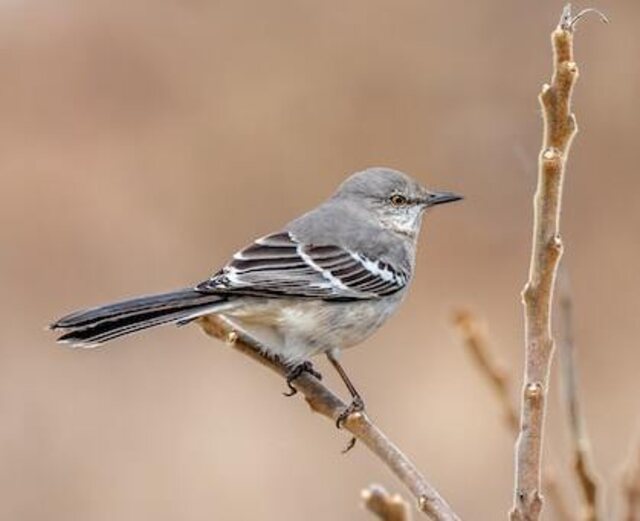
FAQs: What Does A Mockingbird Look Like?
How big are mockingbirds?
On average, mockingbirds measure around 9 to 11 inches in length, with a wingspan of approximately 13 to 15 inches. They have a slim, elongated body shape with a long tail.
What are the markings and patterns on mockingbirds?
Mockingbirds are known for their distinctive white patches on their wings, visible when they are in flight. Some species may also have faint streaks or spots on their breast or belly.
What is the beak shape of mockingbirds?
The beak of a mockingbird is slender and slightly curved, perfectly adapted for capturing insects, fruits, and berries.
How can I recognize different mockingbird species?
While the general characteristics of mockingbirds are similar, specific markings or color variations can help differentiate between species.
What are mockingbirds’ vocal abilities like?
Mockingbirds are famous for their remarkable vocal abilities. They are excellent mimics, imitating the songs of other birds and various sounds they encounter in their environment.
Where do mockingbirds live?
A: Mockingbirds are native to North and Central America and can be found in various habitats, including forests, scrublands, urban areas, and agricultural fields.
What is the behavior of mockingbirds?
Mockingbirds are highly territorial and often engage in aggressive behavior to defend their nesting areas. They are also known for their incredible aerial displays and acrobatic flight patterns.
What do mockingbirds eat?
Mockingbirds have an omnivorous diet, feeding on a wide range of insects, fruits, berries, and occasionally small reptiles or amphibians.
How can I identify mockingbirds?
By observing their physical appearance, coloration, size, shape, plumage, markings, and beak shape, you can confidently identify mockingbirds.

